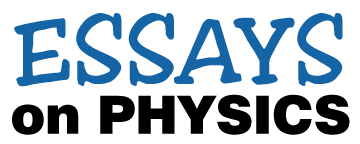Yet it is not simple to answer the question, What exactly is a theory in physical science? All of the comprehensive theories are basically mathematical descriptions of nature, yet they are more than bare mathematics. What we call Maxwell’s equations of electromagnetism are central to the theory of electromagnetism, but one cannot point to the equations and say they are the theory. This would be equivalent to pointing to the numbers in one’s bank book and saying, that is my wealth. Rather the numbers represent one’s wealth, and give accurate information about it only because of certain understandings and assumptions that seem usually to be true. The assumption is made that money is conserved—if left alone, it will neither increase nor diminish; that money transactions follow the laws of arithmetic (indeed, arithmetic was invented to make this true); that bankers are honest. As the bank balance represents wealth, so the equations of a physical theory represent nature. But the connection between representation and reality requires a set of ideas, agreements, and assumptions that the equations themselves do not provide. These must stand beside the equations to give them life. Even then the equations are made to correspond only with experimental results; their correspondence with a deeper underlying reality in nature requires more assumptions that are tempting to make but are probably inessential to science. In the same way one’s bank balance represents only the tangible (experimental) thing called money; that the money in turn represents “real” wealth is a further assumption, which it is satisfying to make but which is of no help in balancing the books.
Altogether a physical theory (a more or less completed theory) is
a set of concepts,
assumptions about the mathematical representation of these concepts,
mathematical relationships among the concepts,
prescriptions for relating the mathematical structure to actual measurements,
the accumulated evidence in favor of the assumptions and prescriptions, and
a way of looking at nature provoked by the ideas and their success.
All of these things taken together constitute the understanding of past facts, the predictions of new facts, and the view of nature that comprise a full theory in physical science. Equally important to the theory are its skeleton of equations and its flesh and blood of ideas, interpretation, and visualizable pictures.
The word “concept” requires some discussion because it is a vitally important word in every theory of physics, naming the link that joins the mathematical, the verbal, and the experimental. In everyday use it normally refers to an idea that is not directly visualizable, either because it is abstract (bravery) or because it is beyond reach of our senses (an atom). It is sometimes used in the latter sense in science, but we most often mean by a concept a thing or a quantity that is measurable. This may be called a quantitative concept. Roughly speaking, a quantitative concept is anything that can be given both a name and a number (or, perhaps, a set of numbers, as in a vector or tensor). Here number means a numerical value, not a serial number—soldiers, sailors, and prisoners do not qualify as quantitative concepts. But money is such a concept. It has a name—which means there can be a common basis of agreement about what it is—and it can be assigned a numerical value.
Some typical physical concepts whose names, at least, are likely to be already familiar to beginning students of physics are force, energy, temperature, and velocity. Some, such as angular momentum and entropy, may be unfamiliar. But even the familiar ones require a new look, for precision of definition is required to pin down the exact meaning of these concepts as they are used in science.
Comprehending a theory requires two major tasks. The first is to learn what the concepts the theory works with mean—how they are defined and how measured. The second is to learn the relationships that exist among the concepts—usually quantitative relationships expressed through equations. Accomplishing the first of these tasks without the second would tell you what the theory is all about, but not what it has to say about nature. Accomplishing the second without the first would be an exercise in pure mathematics, since the equations would not be interpretable. It is the equations coupled with the physical interpretation of the symbols that together comprise the essence of a theory.
There are, of course, many half-born, uncertain trial theories in science, some with ideas but no equations, some (less often) with equations but no certain interpretation. The main concern of the physics student should be with those already completed great structures of theory about whose validity over some wide domain there can be little doubt.
